Related Research Articles

The John Muir Trail (JMT) is a long-distance trail in the Sierra Nevada mountain range of California, passing through Yosemite, Kings Canyon and Sequoia National Parks. From the northern terminus at Happy Isles in Yosemite Valley and the southern terminus located on the summit of Mount Whitney, the trail's length is 213.7 miles (343.9 km), with a total elevation gain of approximately 47,000 feet (14,000 m). For almost all of its length, the trail is in the High Sierra backcountry and wilderness areas. For about 160 miles (260 km), the trail follows the same footpath as the longer Pacific Crest Trail. It is named after John Muir, a naturalist.
Galen Avery Rowell was a wilderness photographer, adventure photojournalist and mountaineer. Born in Oakland, California, he became a full-time photographer in 1972.
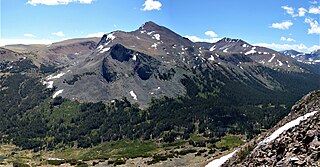
Mount Dana is a mountain in the U.S. state of California. Its summit marks the eastern boundary of Yosemite National Park and the western boundary of the Ansel Adams Wilderness. At an elevation of 13,061 feet (3,981 m), it is the second highest mountain in Yosemite, and the northernmost summit in the Sierra Nevada which is over 13,000 feet (3,962.4 m) in elevation. Mount Dana is the highest peak in Yosemite that is a simple hike to the summit. The mountain is named in honor of James Dwight Dana, who was a professor of natural history and geology at Yale.
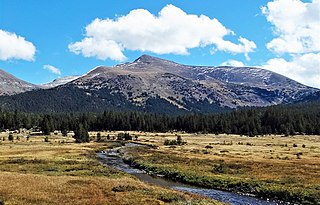
Mount Gibbs is located in the Sierra Nevada of the U.S. state of California, 2.6 miles (4 km) south of Mount Dana. The mountain was named in honor of Oliver Gibbs, a professor at Harvard University and friend of Josiah Whitney. The summit marks the boundary between Yosemite National Park and the Ansel Adams Wilderness, and Mount Gibbs is the sixth-highest mountain, of Yosemite.
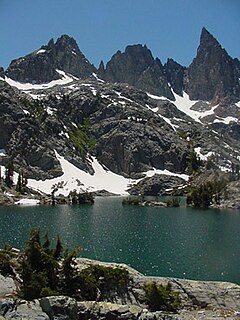
The Minarets are a series of jagged peaks located in the Ritter Range, a sub-range of the Sierra Nevada in the state of California. They are easily viewed from Minaret Summit, which is accessible by auto. Collectively, they form an arête, and are a prominent feature in the Ansel Adams Wilderness which was known as the Minaret Wilderness until it was renamed in honor of Ansel Adams in 1984.
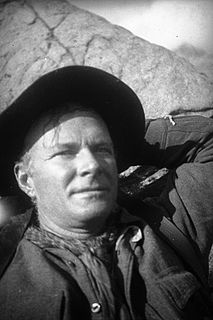
Norman Clyde was a mountaineer, mountain guide, freelance writer, nature photographer, and self-trained naturalist. He is well known for achieving over 130 first ascents, many in California's Sierra Nevada and Montana's Glacier National Park. He also set a speed climbing record on California's Mount Shasta in 1923. The Bancroft Library at the University of California, Berkeley has 1467 articles written by Clyde in its archives.

The following is a bibliography of the Sierra Nevada of California, United States, including books on recreation, natural history, and human history.

Steve Roper is a noted climber and historian of the Sierra Nevada in the United States. He along with Allen Steck are the founding editors of the Sierra Club journal Ascent.

Francis Peloubet Farquhar was an American mountaineer, environmentalist and author. In his professional life, he was a Certified Public Accountant.
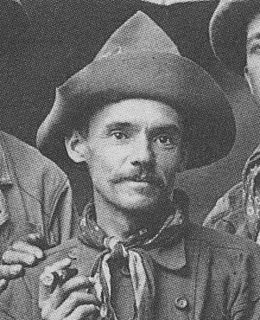
Joseph Nisbet LeConte was a noted explorer of the Sierra Nevada. He was also a cartographer, a photographer and a professor of mechanical engineering.

Mount Davis is a prominent peak in the Ansel Adams Wilderness on the Inyo National Forest and south of Yosemite National Park. The peak was named in honor of Lieutenant Milton Fennimore Davis, who was with the first troops detailed to guard Yosemite National Park. Davis was the first person to climb the peak.

James Sather Hutchinson (1867–1959) was a lawyer in San Francisco, California, a mountaineer and an environmentalist. He was most noted for being an explorer of the Sierra Nevada.

Mount Clark is a 11,527-foot (3,513 m) granite peak in the Clark Range, a sub-range of the Sierra Nevada. It is a popular destination for mountaineers.

Jules Marquard Eichorn was an American mountaineer, environmentalist, and music teacher.
Allen Steck is an American mountaineer and rock climber. He is a native of Oakland, California.

Robert Lindley Murray Underhill was an American mountaineer best known for introducing modern Alpine style rope and belaying techniques to the U.S. climbing community in the late 1920s and early 1930s.
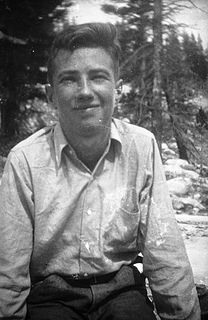
Glen Dawson was an American rock climber, mountaineer, antiquarian bookseller, publisher and environmentalist.
Bestor Robinson was an American mountaineer, environmentalist, attorney and inventor. He was a law partner of Earl Warren, later governor of California and Chief Justice of the Supreme Court of the United States. Robinson was a long-time leader of the Sierra Club.
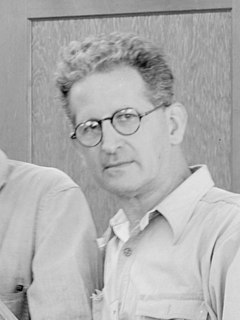
George Cedric Wright was an American violinist and a wilderness photographer of the High Sierra. He was Ansel Adams's mentor and best friend for decades, and accompanied Adams when three of his most famous photographs were taken. He was a longtime participant in the annual wilderness High Trips sponsored by the Sierra Club.
References
- ↑ Farquhar, Francis P., History of the Sierra Nevada, University of California Press, Berkeley, 1965, page 226, ISBN 0-520-01551-7
- ↑ Farquhar, Francis P., History of the Sierra Nevada, University of California Press, Berkeley, 1965, page 228, ISBN 0-520-01551-7
- ↑ Cohen, Michael P., The History of the Sierra Club: 1992 - 1970, Sierra Club Books, San Francisco, 1988, page 20, ISBN 0-87156-732-6
- ↑ Cohen, Michael P., The History of the Sierra Club: 1992 - 1970, Sierra Club Books, San Francisco, 1988, page 62 - 63, ISBN 0-87156-732-6
- ↑ Pavlik, Robert C., Norman Clyde: Legendary Mountaineer of California's Sierra Nevada, 2008, Heyday Books, Berkeley, CA, pages 32 - 37, ISBN 978-1-59714-110-9
- ↑ Alinder, Mary Street, Ansel Adams: A Biography, Henry Holt and Company, New York, 1996, pages 99 - 103, ISBN 0-8050-5835-4
- ↑ Farquhar, Francis P., History of the Sierra Nevada, University of California Press, Berkeley, 1965, page 229, ISBN 0-520-01551-7
- ↑ Brower, David R. (June 1954). "Sierra High Trip". The National Geographic Magazine. Washington, DC: National Geographic Society. CV (Six): 844–868.
- ↑ Smith, John (2000). "Mt. Whitney Pack Trains' Sierra Club High Trips 1946 - 1972". Lone Pine, CA: Mt. Whitney Packers & Owens Valley History Site. Retrieved 5 May 2010.